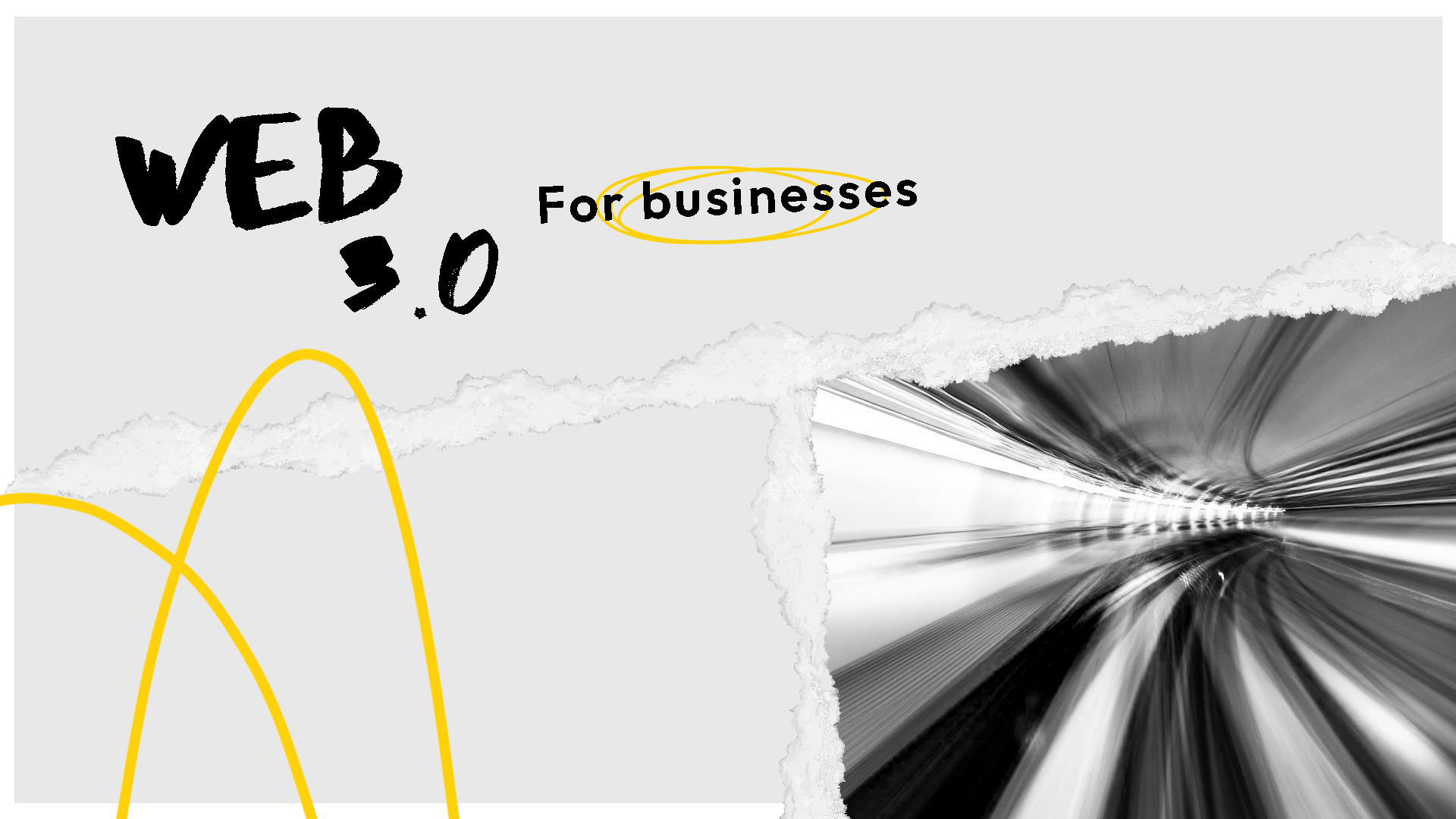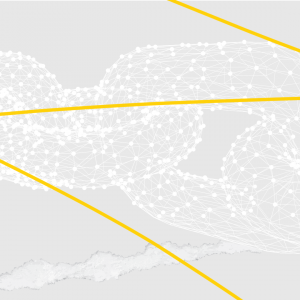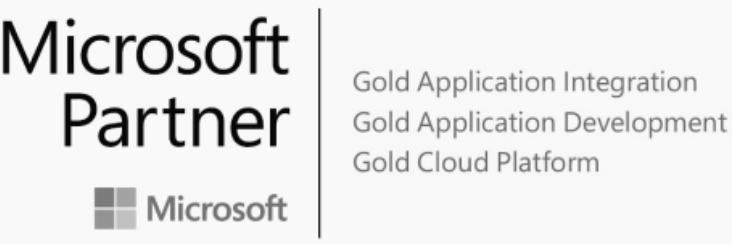With the emergence of Web 3.0, the perception of the internet that we’ve all been used to until not so long ago has been shifting gradually. It became clear that businesses have been exploiting private consumer data with minimal protection surrounding that data, which generated a storm of customer privacy issues, hence affecting users’ trust in day-to-day platforms. This, in turn, encouraged more and more people to get excited for a more secure and democratized internet. In fact, early-adopters, mostly blockchain geeks have already started to migrate towards Web 3.0 platforms.
While the internet helped entrepreneurs better assess their possibilities, data mining and exploitation did not necessarily benefit brand perception. A lack of confidence has been growing by the scale of some recent data breaches. Fortunately, blockchain will change that.
In this in-depth guide, we’ll break down everything you need to know about Web 3.0 for businesses, how it works, some examples in practice, and why you should leverage this concept to achieve business growth.
What is Web 3.0 and how will It differ from today’s Internet?
Web 3.0, commonly referred to as Web 3, is a notion for a new version of the World Wide Web based on blockchain technology and includes principles such as decentralization and token-based economy. Some journalists and engineers have compared it to Web 2.0, which claims that data and information are concentrated in a small group of businesses known as “Big Tech.”
The terms “Web 1.0” and “Web 2.0” relate to different periods in the history of the World Wide Web as it progressed via different technologies and forms. Most web pages were static during Web 1.0, which occurred from around 1991 to 2004. The great majority of users would be considered consumers of content rather than producers.
Web 2.0 is centered on user-created content published to social media and networking platforms, blogs, and wikis, among other services, and it’s founded on the concept of “the web as a platform.” Web 2.0 is thought to have started around 2004 and is still going strong today.
Web 3.0 ideas vary, but they all revolve around the concept of decentralization and frequently include blockchain technology like cryptocurrencies and non-fungible tokens.
Key Characteristics of Web 3.0
The main characteristics of Web 3.0 include decentralization, permissionless technology, and increased security. Web 3.0 could also potentially balance creator economics and lower the barrier to entry.
Decentralization
Data is stored in central repositories in Web 2.0, which is problematic for a variety of reasons. It gave birth to tech conglomerates, otherwise known as Social Networks and concentrated market power in the hands of a small number of people. It also put data and private information at danger.
On the other hand, when it comes to Web 3.0, data is kept on the blockchain in “blocks” and “nodes” scattered over a vast network of computers, which means that your priceless private information is secure and private.
Permissionless Technology
What if someone told you that you needed permission to use the Internet? You’d most likely disagree. Instagram, Facebook, and other Internet services are, after all, free and open to use. This is the control illusion that haunts modern thinking.
In truth, tech giants like the previously mentioned ones have complete influence over how you and I utilize these services. Looking towards a normalized Web 3.0 future, you could join any network without asking for permission; all you have to do is press a few buttons. There’s no need to give up your privacy or relocate before using a service.
Security
Web 3.0 is a more secure version of its older sister, Web 2.0.
Decentralization, for example, makes it more difficult for unscrupulous individuals to get access to vast volumes of data. Users have more control over their information. Customers can select whether they wish to sell information about their online activities or stay anonymous.
Why is Web 3.0 Important for Business
To put it simply, when it comes to Web 3.0, there are several commercial opportunities. Until now, big tech companies have handled and exploited the data provided by consumers.
End users will have total data ownership with Web 3.0 powered by Blockchain. The data that is sent across the network will be completely encrypted. Users will be able to choose whatever information they wish to share with businesses and advertising agencies, and they will be able to profit from it.
To some, this may appear to be a stumbling obstacle for enterprises. On the contrary, it’s the exact opposite. For the benefit of both enterprises and consumers, data sharing will significantly alter.
Consider a current example of web 3.0 in work. Steemit is an excellent example of a web 3.0 social network. It is a decentralized reward system based solely on the Steem Blockchain social media platform. It compensates content authors or bloggers with the STEEM cryptocurrency in exchange for their contributions to the site.
What are the Opportunities for Business That Web 3.0 Creates?
The main opportunities for businesses under Web 3.0 include interoperability, data safety, and improved privacy.
Web 3.0 can also be advantageous for businesses when it comes to operating across borders, selling tokenized assets via NFTs, and building apps on blockchain nodes that create transparency and immutability.
Interoperability
Users will be able to access data from numerous applications without having to be on a certain platform thanks to Web 3.0 capabilities. This means you won’t have to worry about a single device supporting Web 3.0 when others don’t.
Date Security
Web 3.0 will be far more secure than previous versions. Hackers will be unable to access the network without the activity being traced back to them, thanks to decentralization and dispersed nature.
Enhanced Privacy
Pro-privacy and anti-monopoly models will be on the table thanks to Web 3.0 capabilities. It will not incentivise centralized platforms that retain control over consumers’ data. With decentralization and privacy at the forefront, we will witness a shift. The hegemony of digital corporations will expire as consumers gain control over how their data is viewed, and there will be fewer, if any, data privacy attacks.
What does the decentralized blockchain protocol mean for businesses?
While discussing future use scenarios, it’s vital to understand that, although being hosted on a blockchain, these apps will not operate in isolation. All of these dApps (decentralized applications) will operate together in Web 3.0, just like they do now, to deliver integrated functionality that makes them more useful. The insurance contract mentioned above, for example, may receive data from a healthcare application and transmit a signal to a supply chain management contract. APIs will act as the “glue” that unites various disparate apps, just like they did in Web 2.0.
When it comes down to it, we’re not suggesting that Web 3.0 or blockchain will fix all of the world’s or even your company’s problems. What we’re saying is that you shouldn’t be hesitant to try out this new technology.
It will most likely be well worth your time due to the benefits of improved openness, verifiability, availability, and confidence it provides.
Ignoring Web 3.0 now is the same of ignoring the Internet 25 years ago.
Is Web 3.0 a Scam?
Some regard Web 3.0 as a scam, while others see the future of technology. And the discussion frequently devolves into ideology rather than technology, in most cases. Some people claim that consumers are being tricked into believing they possess a digital asset because of the growing popularity of NFTs. Others regard NFTs and Web 3.0 as having a lot of promise.
The current status of NFTs foreshadows a scenario in which your property deed, auto loan contract, and college diploma will all be recorded on the blockchain, together with all pertinent history and information, in an immutable and transparent manner.
As it happens, the internet has too many intermediaries, whereas NFTs can provide a more direct and pure means for artists, musicians, and producers of all types to interact with their audience.
There are many pros and cons associated with Web 3.0. However, we don’t believe it’s a “scam”. Rather, it’s a new, complex form of the internet that is still in its youth.
Trends and what to expect of Web 3.0 for 2022 Onwards
In the coming year and beyond, we can expect to witness a few trends in the context of Web 3.0. For starters, Artificial Intelligence is one of the most crucial Web 3.0 advancements of our generation. A.I is becoming more powerful and pervasive in all industries with each passing year. It is intimately linked to human intelligence. Artificial intelligence can put new products on the market without having to deal with a slew of issues.
We may also expect to see blockchain as a service becoming increasingly prevalent. It’s a new blockchain trend that numerous corporations and enterprises have already embraced. BaaS is a cloud-based service that allows clients to collaborate on digital products using blockchain. Smart contracts, decentralized applications (or dApps), and other services that don’t require the entire blockchain infrastructure to work are examples of digital products.
When it comes down to it, there’s nothing to fear from a business standpoint considering Web 3.0. Rather, this new trend in technology could benefit businesses just as much as it benefits consumers.
Blockchain development isn't out of reach
Developing blockchain technology for business use cases isn’t a pipe dream anymore.
Businesses of all shapes, sizes, and sectors can start putting this technology to work today to achieve any of the applications in this article and beyond.
To discuss opportunities for blockchain development within your business and how you can get started, reach out and let our blockchain development engineers at RebelDot support you as close consultants in developing and launching your digital product idea.






